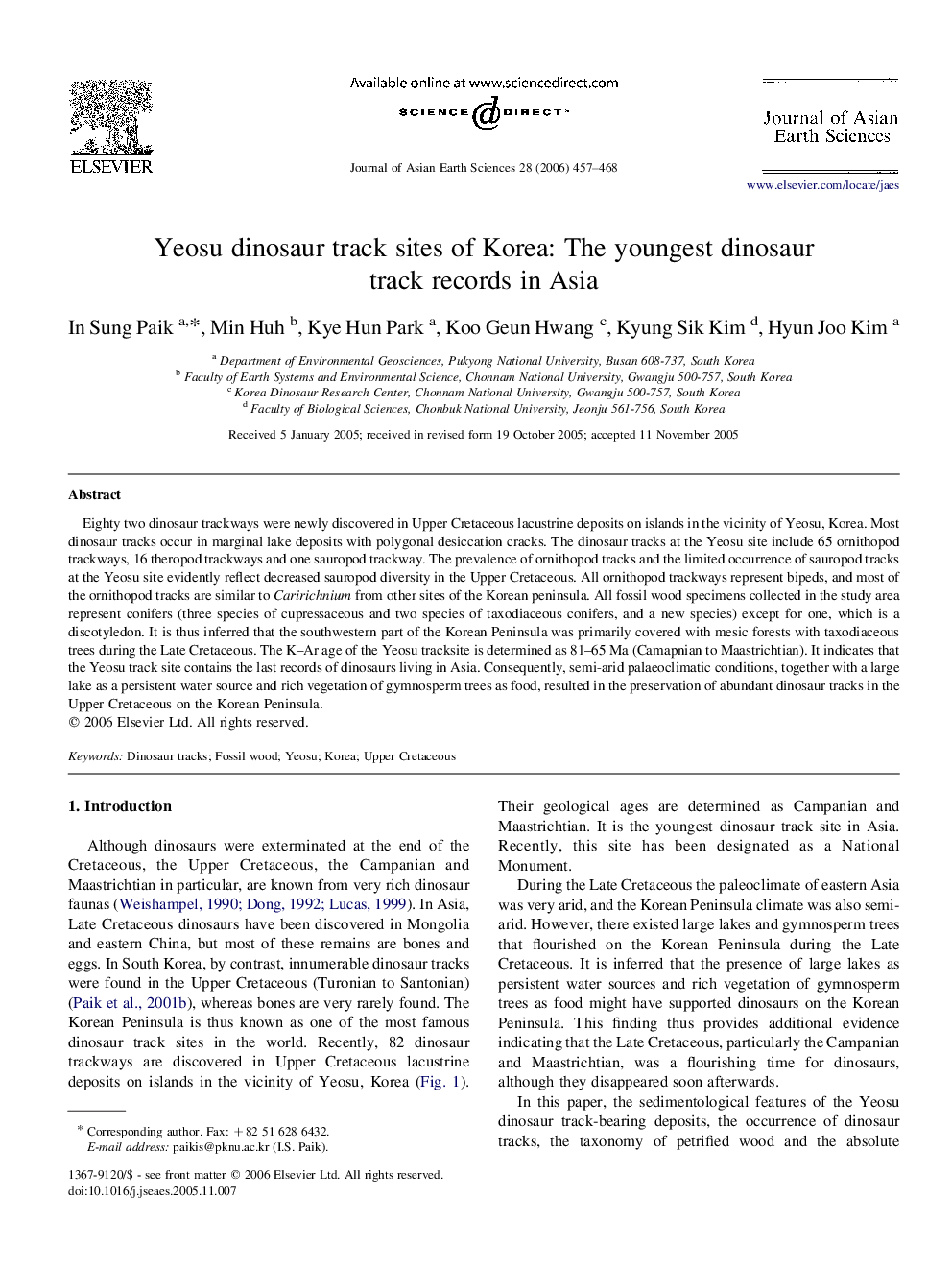| Article ID | Journal | Published Year | Pages | File Type |
|---|---|---|---|---|
| 4732650 | Journal of Asian Earth Sciences | 2006 | 12 Pages |
Eighty two dinosaur trackways were newly discovered in Upper Cretaceous lacustrine deposits on islands in the vicinity of Yeosu, Korea. Most dinosaur tracks occur in marginal lake deposits with polygonal desiccation cracks. The dinosaur tracks at the Yeosu site include 65 ornithopod trackways, 16 theropod trackways and one sauropod trackway. The prevalence of ornithopod tracks and the limited occurrence of sauropod tracks at the Yeosu site evidently reflect decreased sauropod diversity in the Upper Cretaceous. All ornithopod trackways represent bipeds, and most of the ornithopod tracks are similar to Caririchnium from other sites of the Korean peninsula. All fossil wood specimens collected in the study area represent conifers (three species of cupressaceous and two species of taxodiaceous conifers, and a new species) except for one, which is a discotyledon. It is thus inferred that the southwestern part of the Korean Peninsula was primarily covered with mesic forests with taxodiaceous trees during the Late Cretaceous. The K–Ar age of the Yeosu tracksite is determined as 81–65 Ma (Camapnian to Maastrichtian). It indicates that the Yeosu track site contains the last records of dinosaurs living in Asia. Consequently, semi-arid palaeoclimatic conditions, together with a large lake as a persistent water source and rich vegetation of gymnosperm trees as food, resulted in the preservation of abundant dinosaur tracks in the Upper Cretaceous on the Korean Peninsula.
